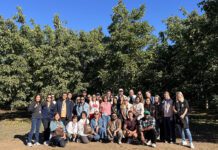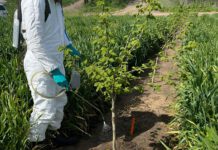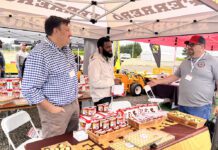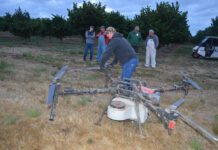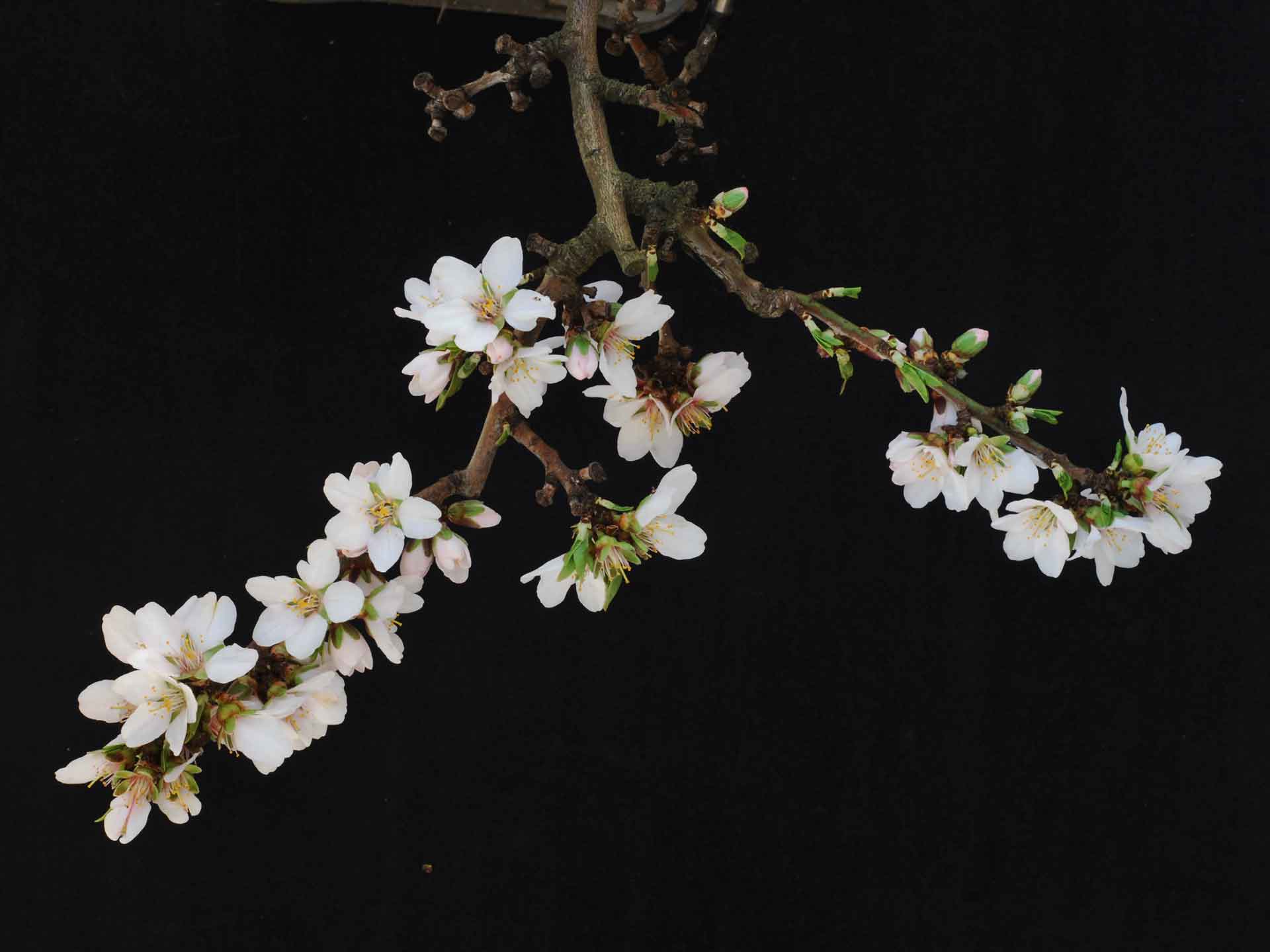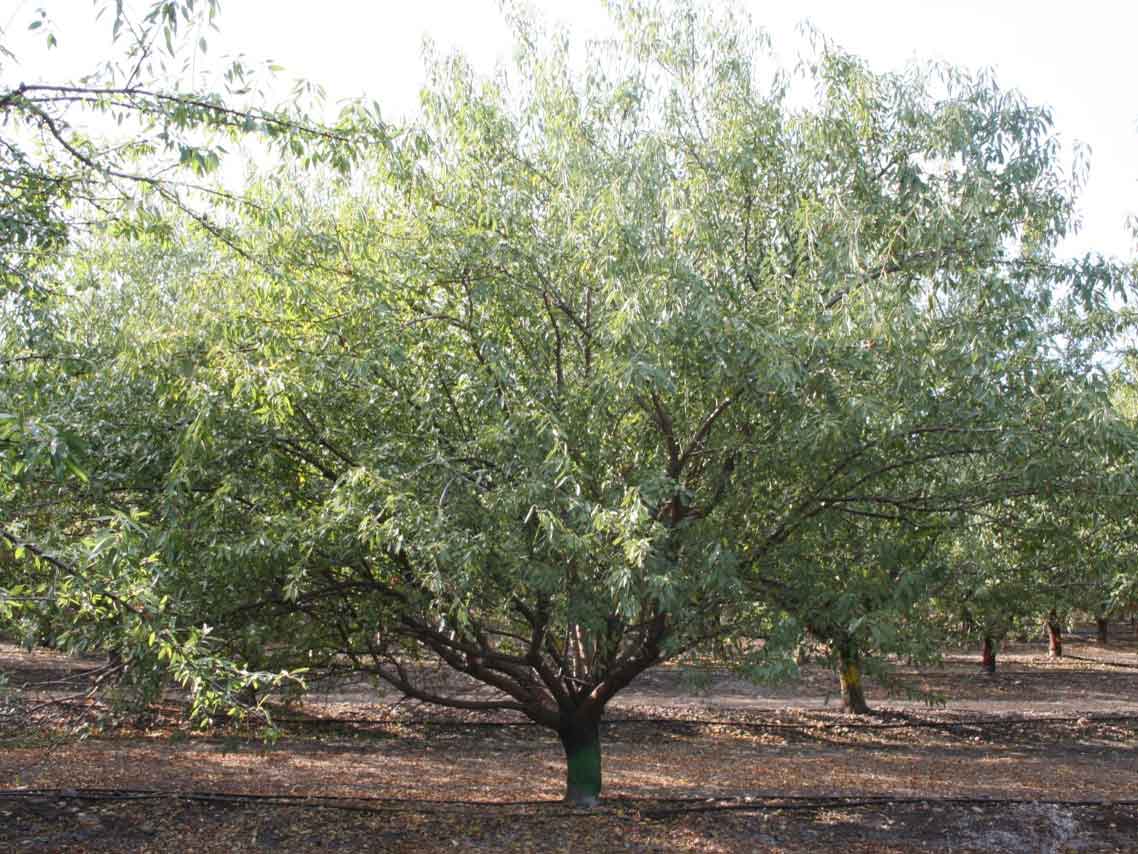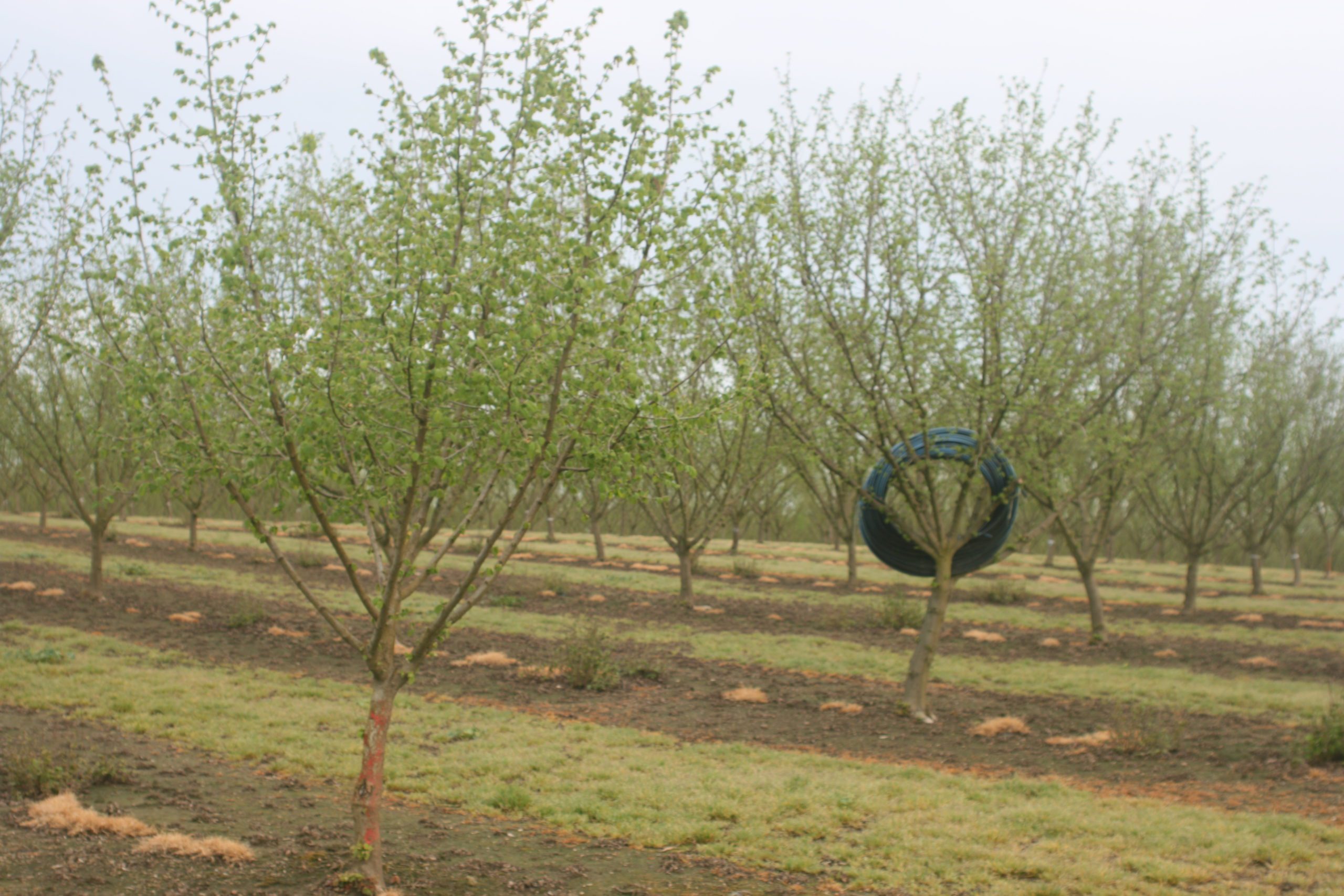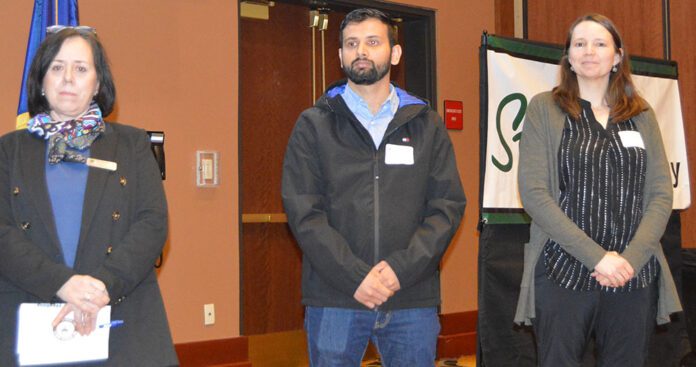
In fall 1986, one month after Shawn Mehlenbacher started as the hazelnut breeder at Oregon State University (OSU), eastern filbert blight (EFB) was found in a Clackamas County hazelnut orchard, marking its first discovery in the heart of Oregon’s hazelnut production area.
Over the next three decades, Mehlenbacher released 28 cultivars, including 22 that used the Gasaway gene to provide resistance to EFB, helping the industry survive the disease’s devastating impact on tree health.
Today, as Mehlenbacher hands over leadership of the OSU Hazelnut Breeding Program to Gaurab Bhattarai, a new strain of EFB has emerged in the Willamette Valley, overcoming the resistance provided by the Gasaway gene. Bhattarai now takes up a similar fight to the one Mehlenbacher began 39 years ago.
“My top breeding goal will be to develop genetic markers, identify new sources of resistance to EFB and integrate them into new cultivars,” said Bhattarai, who started in December as an assistant professor and hazelnut breeder.
Fortunately, Bhattarai said he is not starting from scratch. Several advanced selections with new EFB resistance sources are already in the pipeline. “Shawn has been doing this amazing work for decades, and he foresaw the potential for this to happen and has already started the process,” Bhattarai said.

Diverse Skill Set
Also fortunate for the Pacific Northwest hazelnut industry, Bhattarai brings a skillset that should serve the industry well.
“I think he is a really good fit,” Mehlenbacher said. “He brings some applied breeding experience, including with perennial grapevines and temperate tree nuts, which is an expertise that is unusual to find. He also brings experience in genetics with DNA markers and genome sequences. So, he has the breeding and genetics components that are really needed for this program.”
Similarly, Patricia Stock, head of the Horticulture Department at OSU, spoke highly of Bhattarai and is excited for what he brings to the Hazelnut Breeding Program. “Dr. Bhattarai, a trained plant breeder, represents the new generation of scientists who bring new genetic and genomic tools to address some of the challenges we face in horticulture, including disease and pest control and adaptation to climate change,” Stock said.
Bhattarai, who grew up on a subsistence farm in Nepal, received his bachelor’s degree in agricultural science from Tribhuvan University in Nepal. He holds a master’s degree in biology from Missouri State University, where he worked on mapping DNA markers that conferred downy mildew resistance in wild grapes. He also holds a Ph.D. from the University of Georgia, where he worked on pecans and muscadine grapes. His focus in pecans was on identifying genetic markers linked to scab disease, a major fungal disease affecting pecans in the Southeastern U.S.
Bhattarai’s experience with pecans, a crop he continued to work with as a postdoctoral researcher at the USDA-ARS Fruit and Tree Nut Research Station in Byron, Ga., should serve him particularly well. Bhattarai noted pecans and hazelnuts have similarities in terms of their breeding processes and life cycles.
“Pecan has a very similar type of breeding process as hazelnuts in terms of its breeding method, life cycle and how long it takes from making crosses to releasing cultivars,” he said. “They are quite similar in that sense.” In the case of both crops, the process can take 17 to 18 years.
“I think the training I have received during my graduate degrees is really going to help me with the breeding methods and objectives of the Hazelnut Breeding Program,” Bhattarai said. “The knowledge and training I have received match the objectives of the breeding program here.”
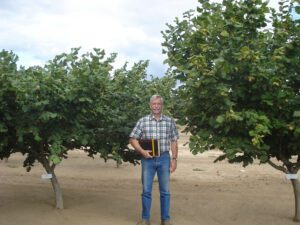
Indelible Footprint
In taking over the breeding program, his first full-time academic position, Bhattarai inherits a program that has left an indelible mark on the Oregon hazelnut industry. The vast majority of the 96,000 acres of hazelnuts in Oregon today are planted with varieties released through the program. With some exceptions, nearly all of the varieties in Oregon orchards today come from crosses made by Mehlenbacher.
“I inherited some seedling blocks from Maxine Thompson, who started the OSU Hazelnut Breeding Program in 1969,” Mehlenbacher said. “Willamette was already in replicated trials by the time she retired. I inherited Lewis and Clark from Maxine, selected them, advanced them to replicated trials and then released them. Everything after that was from crosses that I made.”
Of the 22 cultivars with the Gasaway gene released by the breeding program, eight are for nut production, 12 are pollinizers and two are ornamentals. The two most widely planted varieties in Oregon today, McDonald and PollyO, contain the Gasaway gene and are thus susceptible to the new strain of EFB.
Growers today are employing sprays and aggressively pruning trees to help slow the spread of EFB in the Willamette Valley.
Bhattarai said he looks forward to the challenges and opportunities the position presents and believes , with hard work, he, like Mehlenbacher, can have a significant impact on the hazelnut industry.
“One thing I really like about working with a specialty crop like hazelnuts is it is very concentrated,” he said. “There are not many people working intensively in this specialty crop, and I believe if I work hard and meet the industry’s needs, I can make a significant impact.”
Mehlenbacher, who officially retired from his position in February 2024, is staying on through December of this year to help Bhattarai get off to a strong start. “I feel fortunate when I started, I had some time to overlap with Maxine Thompson,” he said. “We would go through things, and she would talk about the different varieties, the procedures she used, and so on. I’m glad I have the opportunity to do the same with Gaurab, and I’m looking forward to transferring a lot of knowledge over the next several months.
“You can read papers, but when you see it firsthand and receive descriptions of the subtleties of what can go wrong and right, you develop a much better feel for the work,” Mehlenbacher said.
“There is so much that can be done,” Mehlenbacher added. “There are so many opportunities, and I want Gaurab to seize those opportunities.”






